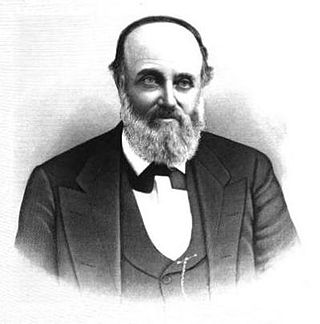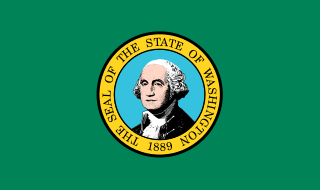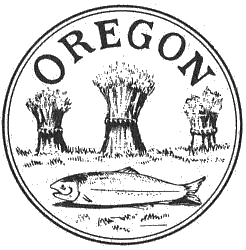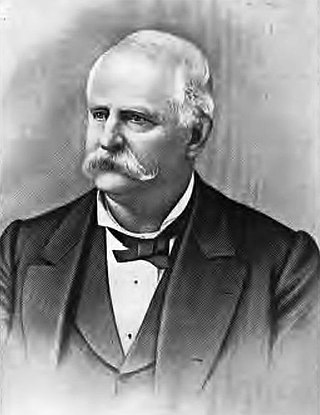Related Research Articles

Cowlitz County is a county located in the U.S. state of Washington. As of the 2020 census, its population was 110,730. The county seat is Kelso, and its largest city is Longview. The county was formed in April 1854. Its name derives from the anglicized version of the Cowlitz Indian term Cow-e-liske, meaning either 'river of shifting sands' or 'capturing the medicine spirit.' Cowlitz comprises the Longview, WA Metropolitan statistical area, which is also included in the Portland-Vancouver-Salem, OR-WA Combined statistical area.
The Territory of Oregon was an organized incorporated territory of the United States that existed from August 14, 1848, until February 14, 1859, when the southwestern portion of the territory was admitted to the Union as the State of Oregon. Originally claimed by several countries, was part of the Territorio de Nutca (1789–1795), later in the 19th century, the region was divided between the British Empire and the US in 1846. When established, the territory encompassed an area that included the current states of Oregon, Washington, and Idaho, as well as parts of Wyoming and Montana. The capital of the territory was first Oregon City, then Salem, followed briefly by Corvallis, then back to Salem, which became the state capital upon Oregon's admission to the Union.
The Territory of Washington was an organized incorporated territory of the United States that existed from March 2, 1853, until November 11, 1889, when the territory was admitted to the Union as the State of Washington. It was created from the portion of the Oregon Territory north of the lower Columbia River and north of the 46th parallel east of the Columbia. At its largest extent, it also included the entirety of modern Idaho and parts of Montana and Wyoming, before attaining its final boundaries in 1863.

The Territory of Idaho was an organized incorporated territory of the United States that existed from March 3, 1863, until July 3, 1890, when the final extent of the territory was admitted to the Union as Idaho.

The Territory of Arizona, commonly known as the Arizona Territory, was a territory of the United States that existed from February 24, 1863, until February 14, 1912, when the remaining extent of the territory was admitted to the Union as the state of Arizona. It was created from the western half of the New Mexico Territory during the American Civil War.

William Nathaniel Bell, originally from Edwardsville, Illinois and later a resident of Portland, Oregon, was a member of the Denny Party, the first group of Euro-American settlers in what is now Seattle, Washington. He lived in Seattle from 1851 to 1856 and then again from 1870 till his death.

The history of Washington includes thousands of years of Native American history before Europeans arrived and began to establish territorial claims. The region was part of Oregon Territory from 1848 to 1853, after which it was separated from Oregon and established as Washington Territory following the efforts at the Monticello Convention. On November 11, 1889, Washington became the 42nd state of the United States.

Arthur Armstrong Denny was an American politician and businessman who is regarded as one of the founders of Seattle, Washington. He founded the Denny Party, and was later the city's wealthiest citizen. He was a 9-term member of the territorial legislature. Seattle's former Denny Hill was named after him; it was flattened in a series of regrading projects and its former site is now known as the Denny Regrade. The city's Denny Way, however, is named not after Arthur Denny, but after his younger brother David Denny.

Oregon pioneer history (1806–1890) is the period in the history of Oregon Country and Oregon Territory, in the present day state of Oregon and Northwestern United States.

The history of Olympia, Washington, includes long-term habitation by Native Americans, charting by a famous English explorer, settlement of the town in the 1840s, the controversial siting of a state college in the 1960s and the ongoing development of arts and culture from a variety of influences.

Columbia Lancaster was an American lawyer and politician who served as the first Delegate from the Territory of Washington to the United States House of Representatives.

William Strong was an American attorney and jurist in the Pacific Northwest. He was the 4th justice of the Oregon Supreme Court when the region was still the Oregon Territory. A native of Vermont, he settled in the Washington Territory after it was created in 1853 and served in the legislature of that territory and on the Washington Supreme Court. Later he returned to Oregon and settled in Portland.

Oregon's Territorial Legislature was a bicameral legislative body created by the United States Congress in 1848 as the legislative branch of the government of the Oregon Territory. The upper chamber Council and lower chamber House of Representatives first met in July 1849; they served as the region's legislative body until Oregon became a state in February 1859, when they were replaced by the bicameral Oregon State Legislature.
James Urquhart served three terms in the Washington Territory legislature. He was also elected to three terms as a county commissioner in Lewis County, Washington. He was a delegate to the Washington State Constitutional Convention. In 1873, he laid out the town of Napavine where he was Postmaster and ran the general store. He chose the town's name from the Indian word "napavoon" meaning small prairie.
The Oregon black exclusion laws were attempts to prevent black people from settling within the borders of the settlement and eventual U.S. state of Oregon. The first such law took effect in 1844, when the Provisional Government of Oregon voted to exclude black settlers from Oregon's borders. The law authorized a punishment for any black settler remaining in the territory to be whipped with "not less than twenty nor more than thirty-nine stripes" for every six months they remained. Additional laws aimed at African Americans entering Oregon were ratified in 1849 and 1857. The last of these laws was repealed in 1926. The laws, born of anti-slavery and anti-black beliefs, were often justified as a reaction to fears of black people instigating Native American uprisings.
Cowlitz Prairie is in Lewis County, Washington, United States. The natural prairie roughly lies along the west side of the Cowlitz River, north of Toledo, east of Interstate 5 in Washington, and South of U.S. Route 12. The Lower Cowlitz tribal group's traditional territory includes Cowlitz Prairie. Early 19th century visitors noticed an area mainly cleared of trees and assessed its dimensions from 4 to 6 miles long, 1 to 2 miles wide, adding up to nearly 6000 acres.
Peter Crawford was a Scottish-born land surveyor who was a prominent pioneer in the Pacific Northwest. He founded Kelso, Washington and platted numerous towns in the Oregon Territory which later became the states of Oregon and Washington. He was a member of the Monticello Convention which petitioned and successfully convinced Congress to create Washington Territory out of the Oregon Territory.
William Myron King, also known as Colonel King for most of his life, was an American pioneer merchant and Oregon state legislator. He served four terms in Oregon's territorial legislature. This included one term as Speaker of the Oregon House of Representatives during the 1851 legislative session. Before immigrating to Oregon, King lived and worked in New York, Pennsylvania, Ohio, and Missouri. After moving to Oregon in 1848, he became a merchant in Portland, and was later the county judge for Multnomah County and a member of Portland's city council.

The Chinook Indian Nation is an unrecognized tribe in the U.S. states of Oregon and Washington that was federally recognized from 2001 to 2002. It consists of the five westernmost Chinookan tribes: the Cathlamet, Clatsop, Lower Chinook, Wahkiakum, and Willapa. Its headquarters is in Bay Center, Washington.
References
- 1 2 3 4 5 Weber, Dennis P. (2003). "The Creation of Washington: Securing Democracy North of the Columbia" (PDF). Columbia - the Magazine of Northwest History. 17 (3). Archived from the original (PDF) on June 29, 2016. Retrieved September 9, 2019.
- 1 2 3 4 Meany, Edmond S. (January 1922). "The Cowlitz Convention: Inception of Washington Territory". The Washington Historical Quarterly. XIII (1): 3–16. JSTOR 40473582.
- 1 2 Banel, Feliks (August 23, 2017). "Cowlitz convention responsible for splitting Washington from Oregon". MyNorthwest.com. Retrieved September 9, 2019.
- 1 2 3 The Chronicle staff (July 19, 2013). "Lewis County's First Elected Sheriff John R. Jackson". The Chronicle . Retrieved January 9, 2025.
- ↑ "Historical Floods Compared with Debris Flows". United States Geological Survey. March 1, 2005. Retrieved September 9, 2019.
- 1 2 McClelland, John M. Jr. (Summer 1988). "Almost Columbia, Triumphantly Washington". Columbia Magazine. 2 (2): 3–11. Archived from the original on April 26, 2012. Retrieved September 10, 2019.
- 1 2 "Territorial Timeline". Washington State Secretary of State. Retrieved September 9, 2019.
- ↑ The History of the Pacific Northwest Oregon and Washington 1889: Volume I. Portland: North Pacific History Company. 1889.
- ↑ United States. Public Land Commission. Committee on Codification (1881). The Public Domain. Its History, with Statistics ... Prepared ... by Thomas Donaldson ... Revised July 16, 1881. [With Maps.]. Washington, DC: U.S. Government Printing Office.
- ↑ Congressional Edition, Volume 657. Washington, DC: U.S. Government Printing Office. 1852.